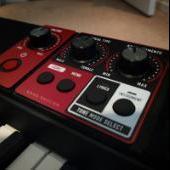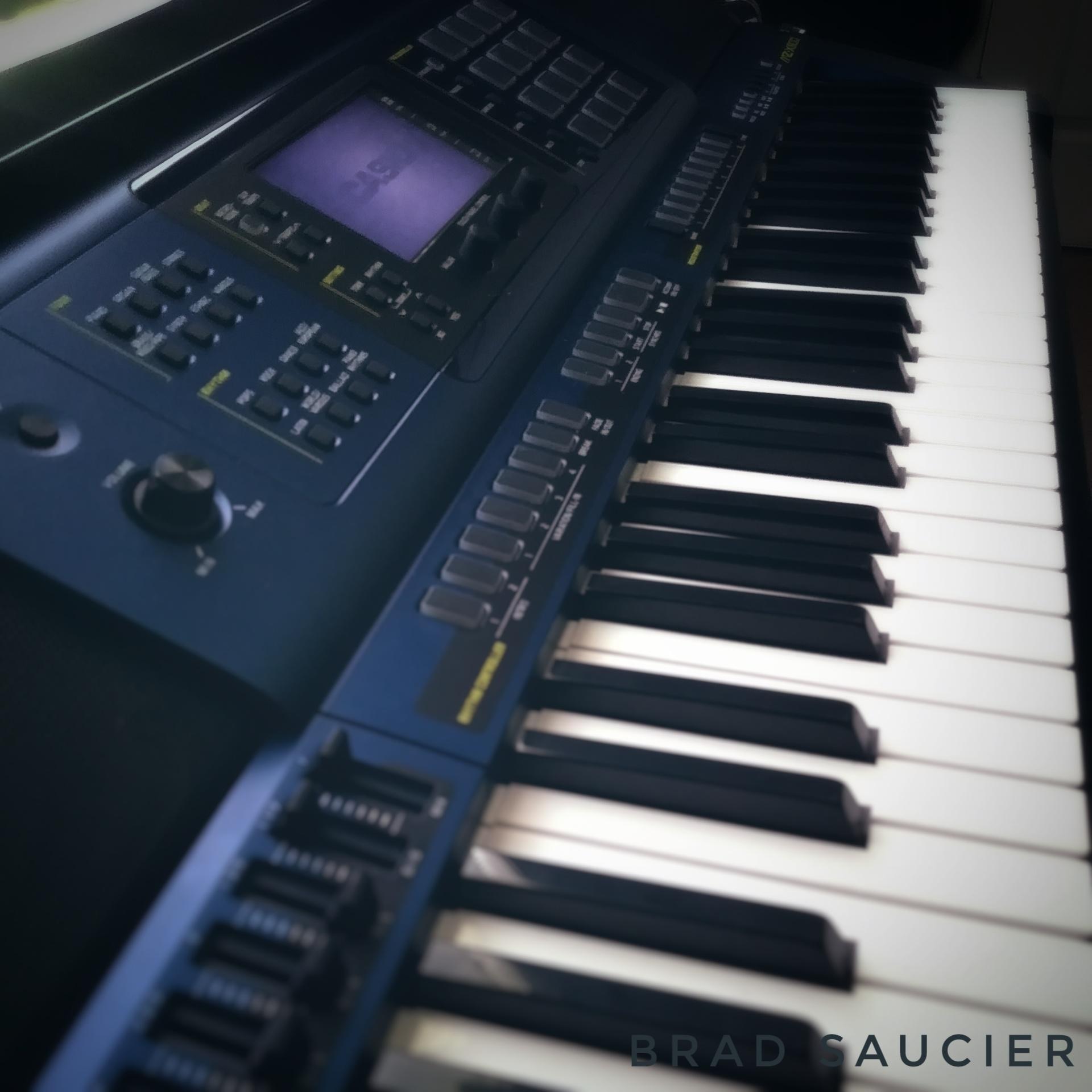-
Posts
8,722 -
Joined
-
Last visited
Content Type
Profiles
Forums
Downloads
Everything posted by Brad Saucier
-
Unfortunately rhythms must be recorded to the "system" track of the song sequencer, which is the "A" parts of the sound engine. The system track allows recording splits and layers as well as full auto accompaniment and auto harmonize live as a single track. The "solo" tracks (B parts) are used to record individual tones. For example, a drum kit used to record on solo track 10.
-
Since the 80s, Casio portable keyboards with full size keys have been the same size as the CT-S1. Nothing has changed in regards to that. This doesn't include mini keyboard models of course.
-

Casio cts400 song exercise section
Brad Saucier replied to polachan's topic in General CT-S and LK-S Discussion
As noted in the CT-S400 user manual song list chart, exercise songs 111-160 are "finger training" exercises. These are to be used without notation for "mental stimulation". This means learning by ear and memorizing the songs. -
To clarify how this works on various Casio models that supports it, rotary speaker emulation is a DSP insert effect on a tone. Some preset organ tones don't have this DSP effect. Some do. Tremolo on electric piano tones is also handled by a DSP effect. Controlling things like rotary speed and tremolo speed is done by editing DSP effect parameters by menus or configuring a physical controller like a built in knob, wheel or pedal to target said DSP parameter, allowing real time control during a performance. Unfortunately the PX-350 does not provide a way to edit or control DSP effects, but the PX-560 does (as well as some other models). Any tone on the PX-560 can be edited to add DSP effects, and it also provides tools to assign DSP controls to knobs or pedals. For buttons to switch between different performance setups, Casio provides registration memory as a way to store a configured set of controls, tones, effects and more needed for a performance. Registrations are arranged in banks. Each bank can store several different performance setups (registrations) accessible by direct access buttons. Multiple banks can be stored, accessible with the bank button. In addition to the PX-560, some other models with 88 textured weighted keys, DSP effects with real time physical controllers, and built-in speakers would be the PX-S3100 and PX-S6000.
-
Have you tried contacting Casio support? https://www.casioca.com/support/contactus
-
https://support.casio.com/en/support/download.php?cid=008&pid=20
- 1 reply
-
- 1
-

-

Casio cts400 song exercise section
Brad Saucier replied to polachan's topic in General CT-S and LK-S Discussion
Music Book PDF download for your model is on the following page... https://support.casio.com/en/support/download.php?cid=008&pid=20 -
Unfortunately it's not possible on this model.
- 1 reply
-
- 1
-

-
The 560 is definitely more programmable than the 350. It gives much more control over effects parameters, DSP editing, tone editing, and master effects. Yes the mod wheel can control rotary speed, or a knob, or a pedal can. If you're looking to upgrade, I think you would be happy. The 350 is a fine keyboard itself, but it does have some limits compared to the 560.
-

Accompaniment volume control by expression pedal
Brad Saucier replied to ray.z.maxu's topic in CT-X3000 / CT-X5000
Casio is usually literal with any terminology used for features. The pedal input jack is labeled "pedal 2/ expression". This is to help clarify that MIDI CC11 Expression is the function if an expression pedal is used with the input on the 3000 and 5000, and not assignable to other functions. Models with a pedal input labeled "Assignable" can perform other functions besides CC11 Expression. Currently the PX-560 is a model which allows expression pedal to control accompaniment volume. Other models are the MZ-X500 and 300. -

Accompaniment volume control by expression pedal
Brad Saucier replied to ray.z.maxu's topic in CT-X3000 / CT-X5000
Expression pedal is only for expression control of upper lower tones. Accompaniment volume can be adjusted by the dial when the function menu is open and accomp vol is selected. Unfortunately this model doesn't have an automated accompaniment fade out function. -

ct-s1 CT-S1 can't be recognise as a midi device.
Brad Saucier replied to Mushroomswiss's topic in CT-S1
Can you post of photo of your cable and connection to your computer? We might spot something to help with. -
Oh wow. That's some "wild" stuff. 😅
-
Unzip the file first. Right click on the file and you should see an unzip option (extract all).
-
Oh those darn cats love piano keys!
-

Jamming with custom made stages on PX5S
Brad Saucier replied to XW-Addict's topic in Share Your Casio Music Here!
I love all of those!- 1 reply
-
- 1
-

-

Would the CT-S1 work as a MIDI controller for standalone sound modules?
Brad Saucier replied to the_cool_guy's topic in CT-S1
USB on the CT-S1 is a "to host" port. This means it can't connect directly to another USB device that requires a host itself. A typical USB to MIDI cable requires a host. A host can be a computer, mobile tablet or phone, or a USB MIDI host box. USB MIDI host box is probably the easiest solution. -
Unfortunately chord mode only works with auto accompaniment. Welcome to the forums. For future reference, it's better to make the title of your topic reflect the question you are asking rather than your name. To do that, you can edit your post.
-
MZX can do it, you just need to rip the CD tracks as a WAV files and use an editor to prepare the samples, trim them, and set any loop point markers that's needed. Wavosaur is a good editor for embedding loop points, otherwise Audacity can work if loops are not needed. MZX sample manager can import the wave files and allow you to map them to key ranges, velocity ranges, and much more.
-

Changing volume of track in edit song
Brad Saucier replied to Gonvise's topic in CT-X3000 / CT-X5000
On the CT-X3000, press Song Bank and select the song to edit. Long press the function button to enter song editing mode. Long press the Part Mixer button to enter the mixer. Make any changes to the parts you want to adjust and press exit. System track uses the "song system" mixer parts. Solo tracks use the "Song Solo" mixer parts. -

Recording starts and stops with drums.
Brad Saucier replied to Lurch's topic in WK-7500/7600 - CTK-7000/7200
There are ways to do it. A user rhythm can be created with a silent variation pattern. That can be used to insert a rest or break of the length desired if needed. It's also possible to save and recall various rhythms with the registrations during recording to the system track. Combined, these methods can be used to construct nearly any sequence of rhythms, breaks and such in real time recording using the rhythm controller buttons and registration buttons during recording. -
Audio recordings automatically record direct to USB flash drive. MIDI recordings record directly to keyboard internal memory. To export a MIDI recording to the flash drive, you'll need to use the media save function. Two file formats are available. SMF type is a standard MIDI file. Casio MRF format is the other type, only compatible with the keyboard itself. You'll find a detailed procedure in the user manual for saving MIDI recordings to USB. If you get stuck, feel free to ask more questions.
-

Casio wk 6600 recording tracks question
Brad Saucier replied to Rochard's topic in WK-6500/6600 - CTK-6000/6200
Most any Casio keyboard in the last 20 years or so with a multi track recorder like this has what's called a system track. The system track is designed to record rhythms, upper and lower tones, and other features that's normally played live on the keyboard. If a model has a feature called "easy record" like the WK-6600, that will automatically select the system track for recording. Other tracks in the recorder are known as solo instrument tracks, used when you want to select a single instrument tone and record with it. On the 6600, you can use the left and right arrow buttons to select the different track types for recording.- 8 replies
-
- recording
- casiowk6600
-
(and 1 more)
Tagged with:
-

Split Keyboard / Arpegiator on one side
Brad Saucier replied to fpi's topic in General CT-S and LK-S Discussion
Both models have an arpeggiator part selection menu. It allows the arpeggiator to use upper 1, upper 2, lower, or both upper 1 and upper 2 together.

